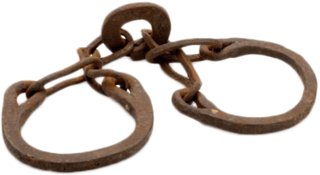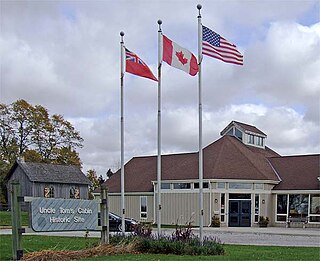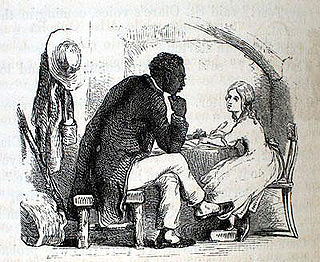 W
WUncle Tom's Cabin; or, Life Among the Lowly is an anti-slavery novel by American author Harriet Beecher Stowe. Published in 1852, the novel had a profound effect on attitudes toward African Americans and slavery in the U.S. and is said to have "helped lay the groundwork for the Civil War".
 W
WAmerican Slavery as It Is: Testimony of a Thousand Witnesses is a book written by the American abolitionist Theodore Dwight Weld, his wife Angelina Grimké, and her sister Sarah Grimké, which was published in 1839.
 W
WJames Battle Avirett was an American Confederate chaplain and author. He was the first chaplain commissioned to serve in the Confederate States Army in 1861. His The Old Plantation: How We Lived in Great House and Cabin before the War, published in 1901 was a nostalgic description of life on a plantation in the Antebellum South. By the time of his death, he was "the last surviving Confederate chaplain."
 W
WJosiah Henson was an author, abolitionist, and minister. Born into slavery, in Port Tobacco, Charles County, Maryland, he escaped to Upper Canada in 1830, and founded a settlement and laborer's school for other fugitive slaves at Dawn, near Dresden, in Kent County, Upper Canada, of Ontario. Henson's autobiography, The Life of Josiah Henson, Formerly a Slave, Now an Inhabitant of Canada, as Narrated by Himself (1849), is believed to have inspired the title character of Harriet Beecher Stowe's 1852 novel Uncle Tom's Cabin (1852). Following the success of Stowe's novel, Henson issued an expanded version of his memoir in 1858, Truth Stranger Than Fiction. Father Henson's Story of His Own Life. Interest in his life continued, and nearly two decades later, his life story was updated and published as Uncle Tom's Story of His Life: An Autobiography of the Rev. Josiah Henson (1876).
 W
WUncle Tom's Cabin Historic Site is an open-air museum in Dresden, Ontario, Canada, that documents the life of Josiah Henson, the history of slavery, and the Underground Railroad. The historic site is situated on the grounds of the former Dawn settlement established by Henson; a former slave, abolitionist, and minister. Through his autobiography, The Life of Josiah Henson, Formerly a Slave, Now an Inhabitant of Canada, as Narrated by Himself, he served as the inspiration for the title character in Harriet Beecher Stowe's Uncle Tom's Cabin.
 W
WA Key to Uncle Tom's Cabin is a book by American author Harriet Beecher Stowe. It was published to document the veracity of the depiction of slavery in Stowe's anti-slavery novel Uncle Tom's Cabin (1852). First published in 1853 by Jewett, Proctor & Worthington, the book also provides insights into Stowe's own views on slavery.
 W
WThe Life of Josiah Henson, Formerly a Slave, Now an Inhabitant of Canada, as Narrated by Himself is a slave narrative written by Josiah Henson, who would later become famous for being the basis of the title character from Harriet Beecher Stowe's 1852 novel Uncle Tom's Cabin. The Life of Josiah Henson, published in 1849, is Henson's first work but was dictated to Samuel A. Eliot, who was a former Boston Mayor known for his anti-slavery views. Although Henson was an accomplished orator, he had not yet learned to read and write. The narrative provides a detailed description of his life as a slave in the south.
 W
WMickey's Mellerdrammer is a 1933 American animated Pre-Code short film produced by Walt Disney Productions and released by United Artists. The title is a corruption of "melodrama", thought to harken back to the earliest minstrel shows, as a film short based on Harriet Beecher Stowe's 1852 anti-slavery novel Uncle Tom's Cabin and stars Mickey Mouse and his friends who stage their own production of the novel. It was the 54th Mickey Mouse short film, and the fourth of that year.
 W
WThe National Era was an abolitionist newspaper published weekly in Washington, D.C., from 1847 to 1860. Each number contained four pages of seven columns each. The National Era was noted for its large size and unique type. It featured the works of John Greenleaf Whittier, who served as associate editor, and the first publication, as a serial, of Harriet Beecher Stowe's Uncle Tom's Cabin (1851).
 W
WTom show is a general term for any play or musical based on the 1852 novel Uncle Tom's Cabin by Harriet Beecher Stowe. The novel attempts to depict the harsh reality of slavery. Due to the weak copyright laws at the time, a number of unauthorized plays based on the novel were staged for decades, many of them mocking the novel's strong characters and social message, and leading to the pejorative term "Uncle Tom".
 W
WUncle Tom syndrome is a theory in psychology referring to a coping skill in which individuals use passivity and submissiveness when confronted with a threat, leading to subservient behaviour and appeasement, while concealing their true thoughts and feelings. The term "Uncle Tom" comes from the title character of Harriet Beecher Stowe's novel Uncle Tom's Cabin, where an enslaved African American man named Tom is beaten to death by a cruel master for refusing to betray the whereabouts of two other enslaved people.
 W
WUncle Tom is the title character of Harriet Beecher Stowe's 1852 novel, Uncle Tom's Cabin. The character was seen by many readers as a ground-breaking humanistic portrayal of a slave, one who uses nonresistance and gives his life to protect others who have escaped from slavery. However, the character also came to be seen, especially based on his portrayal in pro-slavery dramatizations, as inappropriately subservient to white slaveholders. This led to the use of Uncle Tom – sometimes shortened to just a Tom – as a derogatory epithet for an exceedingly subservient person or house negro, particularly one aware of their own lower-class racial status.
 W
WUncle Tom and Little Eva is an oil on canvas painted by Edwin Longsden Long in 1866. It depicts a scene from the novel Uncle Tom's Cabin. The painting is kept at Russell-Cotes Art Gallery & Museum.
 W
WUncle Tom's Cabaña is a 1947 American animated short film directed by Tex Avery. The short is a parody of Harriet Beecher Stowe's 1852 novel Uncle Tom's Cabin, and is Avery's second parody of the novel, the first being Uncle Tom's Bungalow in 1937 while at Warner Bros. Cartoons.
 W
WUncle Tom's Cabin is a 1910 American silent short drama produced by the Thanhouser Company. The film was adapted by from the 1852 novel Uncle Tom's Cabin by Harriet Beecher Stowe. The plot of the Thanhouser production streamlined the actual story to portray the film over the course of a single reel. The film was released on July 26, 1910, on the same day that Vitagraph released the first reel of their own three reel version of Uncle Tom's Cabin. This prompted the Thanhouser Company to advertise against the Vitagraph film by referring to the other as being overly drawn out. The film garnered mixed, but mostly positive reception in trade publications. The film is presumed lost.
 W
WUncle Tom's Cabin is a 1914 American silent historical drama film directed by William Robert Daly using Vitagraph and starring Sam Lucas, Walter Hitchcock, and Hattie Delaro. It was based upon playwright George L. Aiken's theatrical adaptation of Harriet Beecher Stowe's 1852 novel, Uncle Tom's Cabin. It was produced at Fort Lee, New Jersey by the newly-founded World Film studio.
 W
WUncle Tom's Cabin was a 1918 American silent drama film directed by J. Searle Dawley, produced by Famous Players-Lasky Corporation and distributed by Paramount Pictures under the Famous Players-Lasky name. The film is based on Harriet Beecher Stowe's 1852 novel Uncle Tom's Cabin and George Aiken's eponymous play.
 W
WUncle Tom's Cabin (1927) is a silent film directed by Harry A. Pollard and released by Universal Pictures. The film is based on the 1852 novel Uncle Tom's Cabin by Harriett Beecher Stowe and was the last silent film version. A copy is preserved at the Library of Congress.
 W
WUncle Tom's Cabin is a 1965 German film directed by Géza von Radványi. The film was entered into the 4th Moscow International Film Festival. It is based on the novel Uncle Tom's Cabin.
 W
WUncle Tom's Cabin is a 1903 American silent short drama directed by Edwin S. Porter and produced by the Edison Manufacturing Company. The film was adapted by from the 1852 novel Uncle Tom's Cabin by Harriet Beecher Stowe. The plot streamlined the actual story to portray the film over the course of 19 minutes. The film was released on 3 August 1903 at the Huber's Fourteenth Street Museum in New-York.